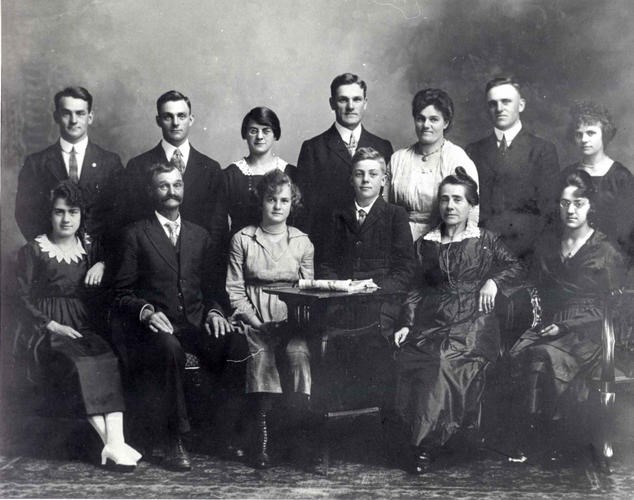I get it. As my siblings and I struggle to sort out the treasures from the junk in my parents’ home of 35 years, I can fully understand the many small but heart-wrenching decisions made by families as elderly people pass away or go into care.
What to keep and what must go?
The reality is it can’t all be kept.
My mother, unknown to any of us, made all sorts of notes over the years. Who is to get Great Great Granny Laidlaw’s Wedgwood platter or Grandfather Fletcher’s steamer trunk?
This has made this process a lot simpler, but yet there are the other things.
A stack of 78 Victrola records, vintage glassware and linens, and a multitude of small knickknacks given as favours at long forgotten special occasions.
At his request, I took charge of my father’s genealogy research and filled three extra large totes with books, which represents only a tiny fraction of his extensive library.
These hard choices must also have been made in the years since the passing of Miss Josephine Green in 1977.
Some sentimental person in the extended Green family of Innisfil Township must have cared for her treasured keepsakes for a further 40 years until perhaps they too could keep them no longer.
A pretty biscuit tin arrived at a thrift shop in south-end Barrie several years ago and, upon opening it up, it was found to contain a collection of old sepia photographs and some tintypes, wedding invitations, greeting cards and an abundance of postcards beginning in 1910 when Josephine Green was six years old.
The simple collection touched the hearts of the thrift-store staff and they put the tin aside for a time and then passed it on to me. Perhaps there was some historic value in the bits and pieces. Maybe a story could be built on the clues within.
The first postcards came from Toronto, including one gem that shows Old City Hall towering over just about everything else in the area.
Often addressed to Miss ‘Josie’ Green of Fairview Farm in the tiny hamlet of Craigvale just outside of Stroud, each contained a short note from one of several loving aunts.
“Dear Josephine, I sent your Mama an express order for butter and eggs last Friday. Please let me know if she got it all right. Hope all are well. We are all well. Love from Aunt Hattie.” September 18, 1913.
Beginning in 1917, as the Great War wore on, conscription of Canadian men became necessary to replace the lost and wounded soldiers overseas.
Broke and weary, Josephine’s recently drafted elder brother, Clarence, sent a postcard depicting Amherst, Nova Scotia, as he anxiously awaited sailing orders.
“Dear sister and all, just a few lines to let you know that I have not got a cent of money yet so I think it should soon come to me or go home. I am just strapped except a bit I keep for postage stamps and it is getting small. I am well and hope this finds you all well too. From C.W.G. 1st Comp.” July 5, 1918
A later postcard, with the cartoon image of a bedraggled soldier on the reverse side, arrived from Clarence.
“Dear sister, this card is just how I feel but I have to finish my job first and it is not so bad since I came to this hospital. No brass and no rifle to look after so I will close. C.W.G. with love.”
In 1919, Josephine’s elder sister, Florence, a frequent writer, had recently married C.L. McCabe of Thunder Bay and relocated to that area.
“If you miss me like I miss you, I pity you all. Flo.”
The four oldest brothers, Frank, Fred, Clarence and Arthur, all travelled out west one year to work on the Prairie grain harvest.
In Winnipeg, they took a moment to document their trip by posing for a group portrait. A postcard arrived in Craigvale before the boys returned home to the family farm.
“We are harvesting, mowing, all the wheat cut and are starting the oats tomorrow. I guess you are all done by this time. We heard that Pa had the best crop that ever grew on that farm this year. Love from the boys.”
These cards and letters offer quick glimpses into the lives of a large but close knit early 20th-century rural family in Simcoe County. Ornate Valentine greetings and wedding invitations mix with funeral cards and jotted notes about the passing of close neighbours.
Life was different back then, but yet somehow the same.
Each week, the Barrie Historical Archive provides BarrieToday readers with a glimpse of the city’s past. This unique column features photos and stories from years gone by and is sure to appeal to the historian in each of us.



